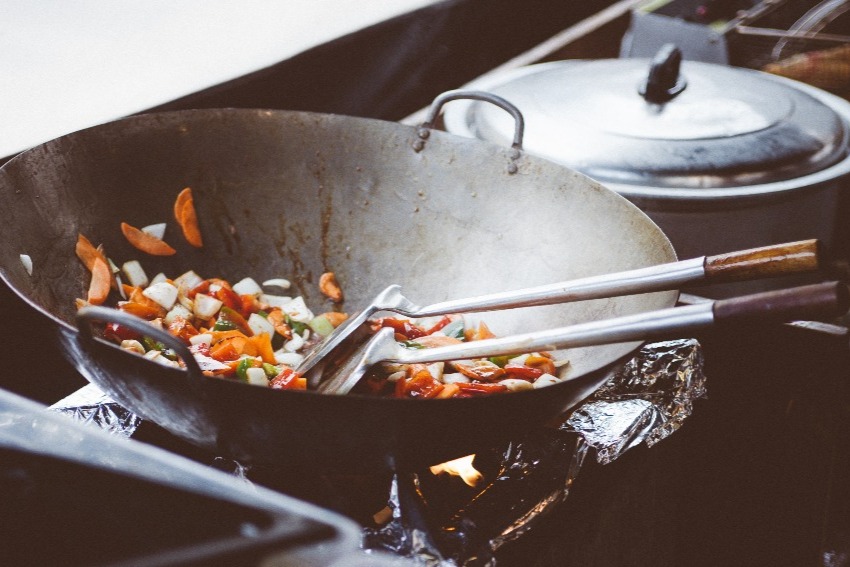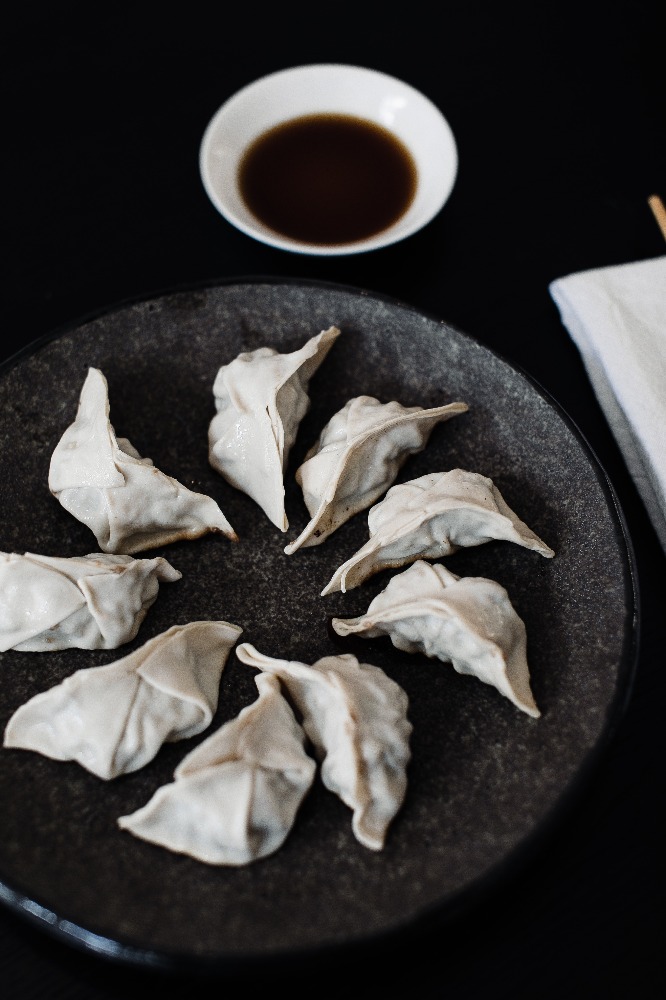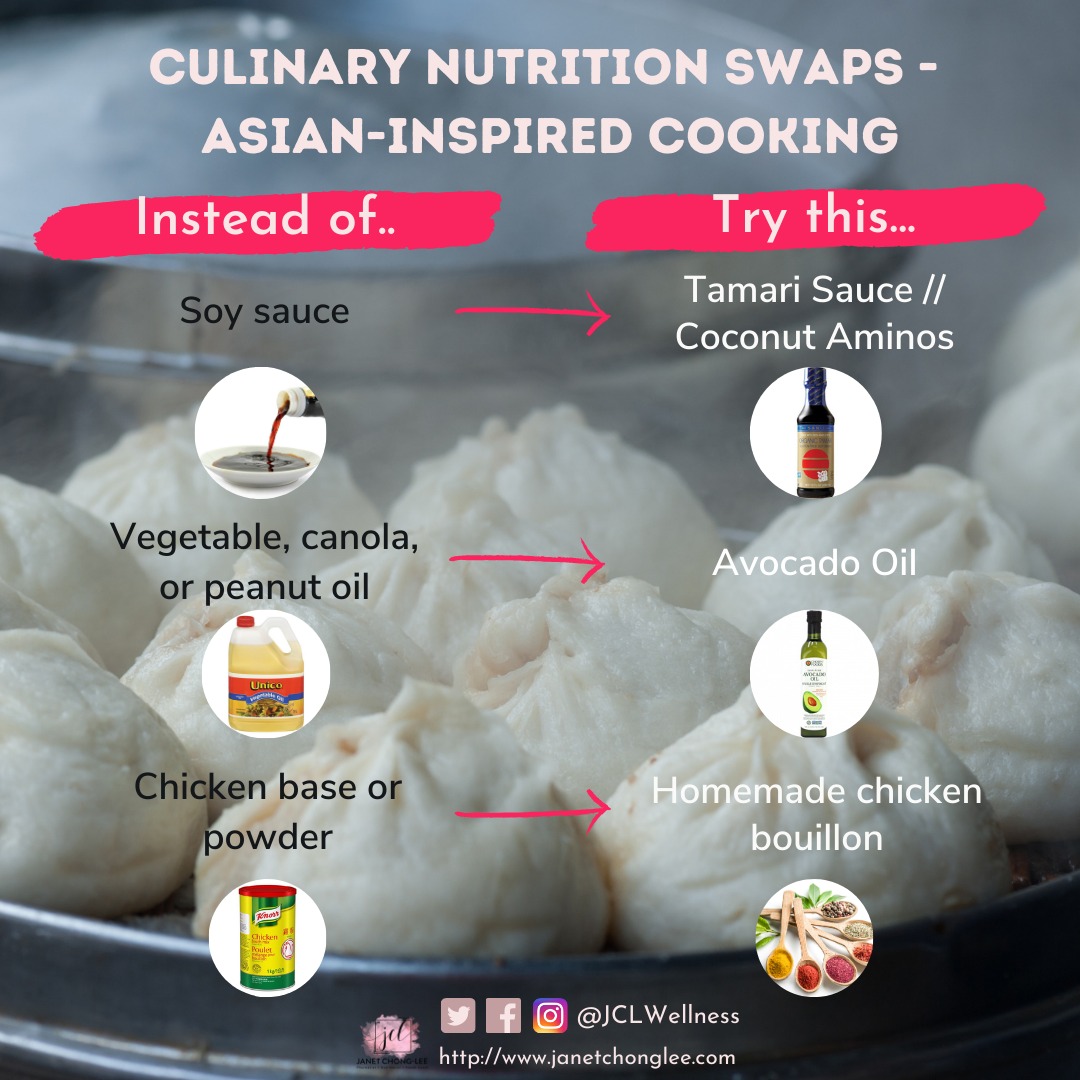I go over 3 pantry items to be mindful of, and their swaps for more healthier dishes!
January 31st, 2021

There's something really comforting about the food you eat growing up. When I think back to my childhood
and youth, I have fond memories of eating dinner with my parents and little brother while watching
TV. While I wouldn't be able to list or name all that she's made over the decades, I will always remember
the love and intent put into each and every dish. My mom is a very talented and versatile cook who is able
to cook up a storm, but my top faves are: potstickers, Jamaican-Chinese chicken stew, oxtail, chow mein,
and jerk chicken. You may recall that I grew up in Jamaica, so many of my mom's dishes have a
Chinese-Jamaican flare to it.
In an attempt to capture the essence of my mom's cooking, I shadowed her several times to learn her recipes.
What I learned was that 1) she never uses measuring cups or spoons, 2) the quantities are always 'some of
this' or 'a little bit of that' and 3) most of her cooking uses some type of soy sauce, chicken powder or
hoisin sauce (or a combination of them all).
While I've recorded down the original ingredients that my mom uses in her cooking, I've sought to source
healthier ingredients when possible. This is not to say that my mom's cooking is unhealthy; home cooked
meals will always be far healthier than what you buy at a restaurant. However, I want to make my foods even
more healthy and nourishing (while also tasting good too!).
Although my food will never taste as good as mom's, I'm confident that it tastes "good enough" while paying
homage to my mom's cooking. These 3 swaps will re-train your tastebuds and brain to enjoy food without all the
flavour enhancers that are commonly lurking in these pantry items!

Photo by Rachel Claire from Pexels
Soy sauce (and its many types) is undoubtedly one of the most commonly used ingredients in Chinese or
Asian-inspired cooking.
The traditional method of making soy sauce was to combine soy and wheat and allowing it to naturally gather
spores (fungi) from the environment to brew and ferment. After it has been brewed and fermented for several
months, it is then pasteurized and sold as soy sauce.
With the rise of industrialization and modern technology, many soy sauces are now made by boiling the soy
and grain mixture in hydrochloric acid for 3 days which results in a hydrolyzed soy protein. This replaces
the lengthy process of brewing and fermentation. They have a different flavor, aroma, and texture when
compared to brewed soy sauces. However, they can be produced more quickly and cheaply. To enhance its
taste and appearance, salt, sugar, monosodium glutamate (MSG), caramel, and other ingredients may be added as
opposed to its traditional counterpart.
If you have a bottle of soy sauce lying around, take a quick look at its ingredients. The ingredients listed
on my mom's bottle of soy sauce include: Water, Soybean (which may or may not be non-GMO), Wheat Flour
(contains gluten) , Salt, Flavour Enhancer (E621, E635), White Sugar, Monosodium glutamate, Colour (E150c),
Yeast Extract (used as a food additive to boost umami flavouring), Preservative (E202).
On the other hand, my San-J Tamari Sauce ingredient list includes: Water, Soybeans (non-GMO, as per bottle),
Salt, Alcohol (to preserve freshness), Aspergillus Oryzae, Bacterial Culture. There are no added flavour
enhancers, MSG, sugar, or colouring. San-J Tamari sauce is also wheat-free (thus gluten-free), kosher, vegan,
and non-GMO Project verified.
Coconut aminos is another healthier substitute in place of soy sauce. It is made from the fermented sap of
coconut palm. It is not as rich or salty as soy sauce. It may be a suitable option for those who want to
lower salt intake or are trying to avoid or reduce their soy intake. It is soy-free, wheat-free, and
gluten-free. The
Bragg Live Food Coconut Nectar All Purpose Seasoning
(Canada Labeling) contains distilled
water, organic coconut nectar, sea salt, and organic apple vinegar.
If you decide that you want to use soy sauce, choose one that's:
You can consider Pearl River Bridge Organic Soy Sauce or Kikkoman Organic Soy Sauce .
Vegetable oil isn't actually made from vegetables. If you think about it, your broccoli or cauliflower has zero fat in its natural state. Vegetable oils are actually made from the fruits or seeds of plants. Most canola crops are genetically modified (GMO) to improve oil quality and increase plant tolerance to herbicides. Over 90% of the canola crops grown in the United States are GMO.
These oils are:
On the other hand, avocado (which is a fruit by the way) oil is made from the flesh of the avocado surrounding the seed. It is high in monounsaturated fatty acids and has a high smoke point, which makes it a great oil for frying. Avocado oil is very versatile as it can also be used for baking, cooking, searing, roasting, etc. When choosing avocado oil, choose one that is cold-pressed, unrefined, and stored in a glass container. We use Chosen Avocado Oil in my household.
Similar to soy sauce, chicken base (also known as chicken broth, chicken powder) is a staple in many
Asian households. My mom would put that sh*t on everything because it made everything taste so good!
However, let's take a look at its
ingredients:
salt, monosodium glutamate, corn syrup solids (highly
processed), hydrolyzed soy/corn/wheat protein (remember, this is made by boiling the soy, corn, or wheat
in hydrochloric acid then neutralizing it), dehydrated mechanically separated cooked chicken, corn starch
(likely GMO corn), chicken fat, sugar, calcium silicate, natural & artificial flavour (what?!), yeast extract
(another flavour enhancer), disodium inosinate, disodium guanylate (the last 2 ingredients are flavour
enhancers that enhance the umami flavour when used with MSG), spices, modified milk ingredients,
cysteine hydrochloride (to prolong shelf life), colour (chicken powder is not naturally yellow), citric acid,
onion powder, succinic acid (acidity regulator, flavouring agent) Contains: Barley, egg, milk, soy, wheat.
WHOA. Who knew that the main ingredients for CHICKEN broth mix would be salt and MSG? Mechanically
separated cooked chicken is 5th on that ingredient list.
If you're interested in making your own, check out
I Heart Umami's Chicken Bouillon recipe or
Nom Nom Paleo's magic mushroom powder. While the magic mushroom powder isn't the same as chicken broth,
it does provide a boost of umami flavouring to my food. It's hard to find a chicken bouillon or base with
better ingredients. However, if you really want to purchase one,
GoBio Organic Chicken Bouillon Cubes
have better quality ingredients that you can consider.
Remember, the food industry is a business and does not have our best interests at heart. They have
scientists that are constantly working to make their product tastier and more addictive.
When we know better, we should aspire to consume better. There are those that don’t mind what’s in
their soy sauce, and that’s okay. We can still be friends! For myself and my household, we try to reduce
our use of highly processed pantry items and choose to spend our money on better quality ingredients.

Does this mean I never eat out? Of course not. Does this mean I don’t enjoy my mom’s cooking? No.
I will always love and cherish each dish that she makes with love. But it’s because of this that I
choose to use the best that I can in my own kitchen.
What other swaps are you interested in knowing more about?
Contact me
and let me know!
Note: this post and website receives commissions on purchases made through the Amazon Affiliate Program.
This means that a commission is paid to JCL Wellness at no additional cost to you when you make a purchase
by clicking any or all of the above links.
- Janet
Copyright © 2021 JCL Wellness.
All rights
reserved.